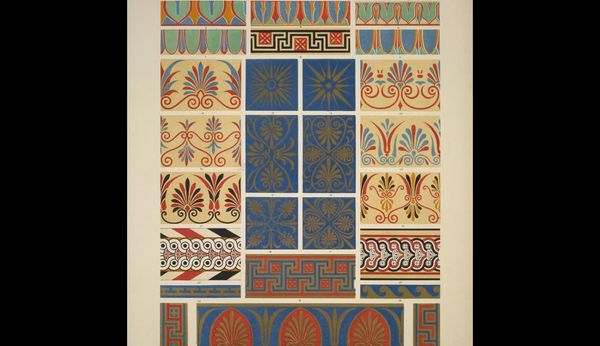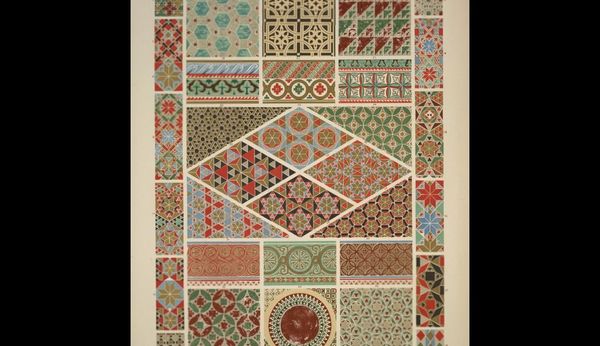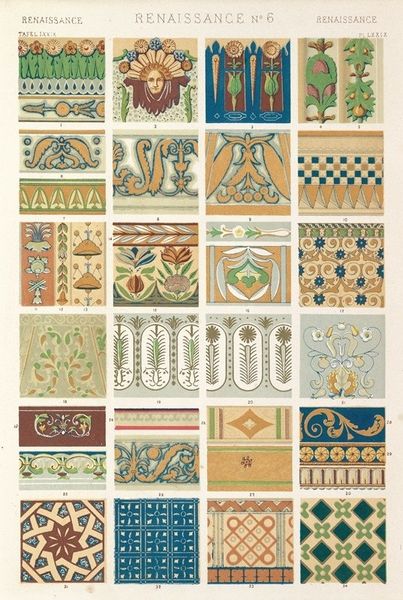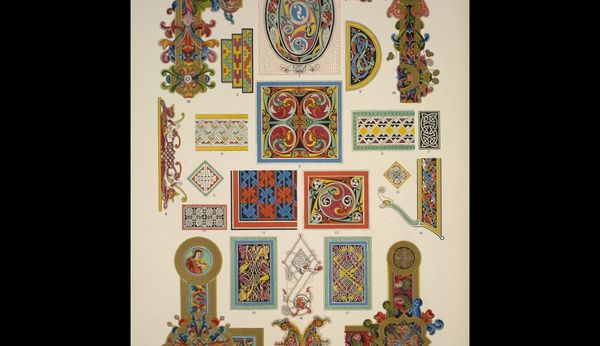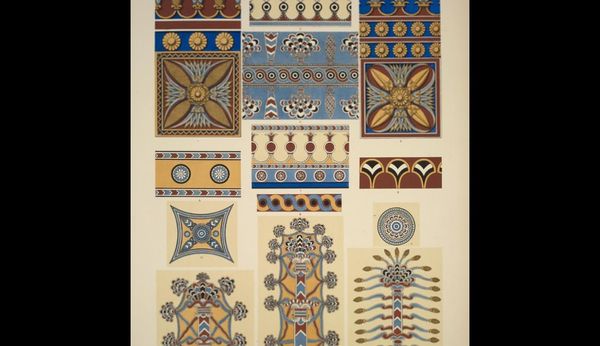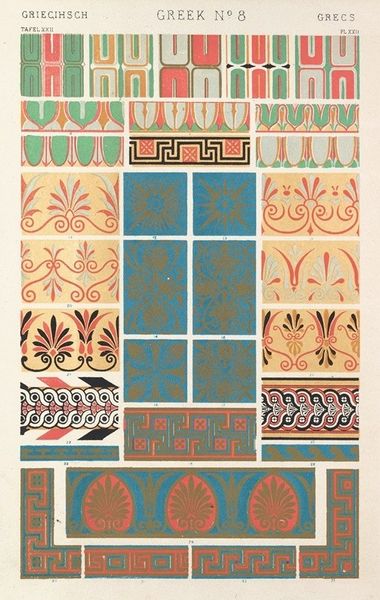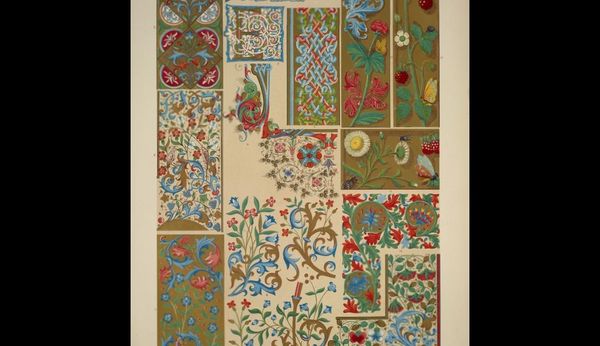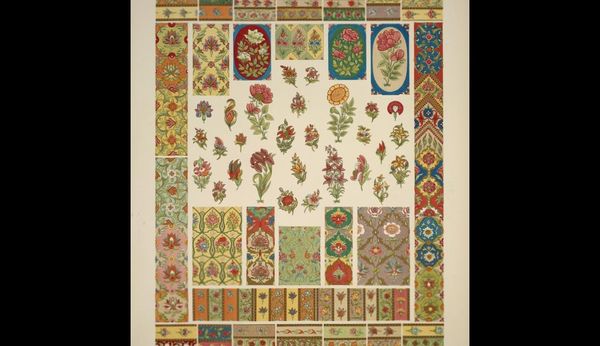
drawing, ornament, print
#
geometric grid
#
pattern heavy
#
tiling design
#
drawing
#
ornament
# print
#
pattern
#
geometric pattern
#
tile art
#
geometric
#
repetition of pattern
#
vertical pattern
#
tiled
#
pattern repetition
#
decorative-art
#
layered pattern
Copyright: Public domain
Owen Jones made this plate of Renaissance Ornament, number six, with reference to pottery at the Hotel Cluny and Louvre. It's a lithograph, meaning that it’s printed from a flat stone surface, using the resistance between grease and water. The technique allowed for relatively easy reproduction of Jones's intricate designs. The resulting image emphasizes the flat, patterned nature of these motifs. Jones extracted and re-presented them for a contemporary audience. These patterns weren't conceived as fine art. They were part of a broader design vocabulary, intended for application across various media, from ceramics to textiles. In this way, Jones sought to elevate these everyday forms through careful study and dissemination. By making them available for modern designers and manufacturers, Jones blurred the lines between historical inspiration, industrial production, and artistic creation. This underscores a shift in the 19th century toward democratizing design, making aesthetic principles accessible to a wider audience.
Comments
No comments
Be the first to comment and join the conversation on the ultimate creative platform.


